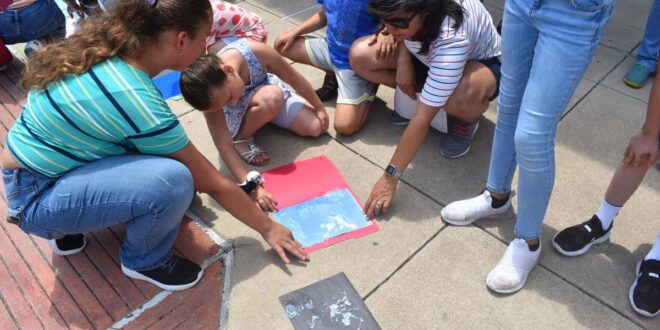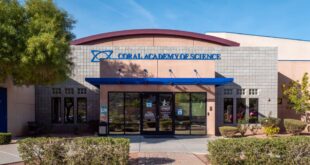About the Sun Science Class
About 30 youngsters came to the Stewart C. Meyer Harker Heights Library Wednesday afternoon to learn about the effects of the sun in Wednesday’s class “Sun Science.”
Library Director Lisa Youngblood created an animated discussion with the kids as she asked questions about the sun and its properties like heat, light, and energy.
Learning About the Sun
“Who wants to be the sun?” Youngblood asked.
Seven-year-old Keahi Contreras, who was wearing an appropriate yellow t-shirt, volunteered. Youngblood placed him in the center of the room and then asked the group to circle the sun just like a planet would do. As they orbited, Youngblood talked about what would happen if one got too close to the sun or too far from it.
“You would burn up,” Clara Jacobs, 6, said. “You would freeze and die if you didn’t have sun.”
Dangers of Looking into the Sun
For the next activity, Youngblood talked about the dangers of looking into the sun. She placed a pair of sunglasses at each table and introduced her volunteers. An adult at each table was given a blacklight flashlight as Youngblood talked about UV rays from the sun.
“Blacklights have a bit of UV rays in them, so you don’t want to look into the flashlight or shine it into anyone else’s eyes,” she said. Youngblood darkened the room and shined a beam from her flashlight through a pair of sunglasses onto the table.
“You see how the light is not so bright when it goes through the sunglasses?” she asked. “These sunglasses have UV protection in them, and they can protect your eyes from damaging UV rays.”
Sunscreen and Sunlight Protection
The last demonstration was more complicated. Each table was given a transparent sheet with a paper backing. On it, she asked the kids to draw four numbers: 8, 20, 30, and 100. Then, Youngblood and her volunteers each grabbed a bottle of sunscreen from the front and squeezed a small amount onto the transparent sheet.
“The numbers represent the Sunlight Protective Factor or SPF,” Youngblood said. “Now, follow me outside.”
All of the participants were eager to see what would happen next.
Youngblood had several sheets of reactive paper, on which she instructed the kids to lay down their transparent sheets for five minutes.
“It seems like an hour,” said five-year-old Clay Thompson.
After the allotted time, the group went inside and placed the reactive paper in pans of cold water and to their amazement, the papers had been protected to different degrees by the sunscreen.
“That’s what can happen to your skin when you go out into the sunshine,” Youngblood said. “Without sunscreen, you can burn, just like the paper that turned dark.”
Importance of Sun Protection
Good lessons were taught about the importance of protecting their eyes and skin from the effects of the sun. Youngblood plans to conduct similar classes in the months leading up to the solar eclipse in April 2024.
 Mind Uncharted Explore. Discover. Learn.
Mind Uncharted Explore. Discover. Learn.

